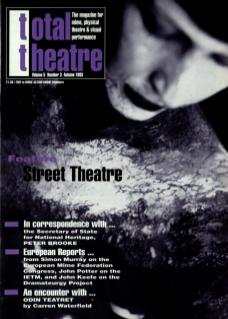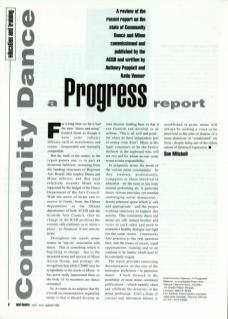For a long time we have had the term 'dance and mime' banded about as though it were some culinary delicacy such as strawberries and cream – inseparable and mutually compatible
But the truth of the matter, as the report points out, is in part a historical faiblesse, stemming from the funding structures of Regional Arts Boards who employ Dance and Mime officers, and the fact that until relatively recently Mime was supported by the budget of the Dance Department of the Arts Council. With the move of mime and its access to funds, from the Dance departments to the Drama departments of both ACGB and the Scottish Arts Council (but no change in the RAB position) the concern still continues as to mime's place – in financial if not artistic terms.
Throughout the report mime retains its ‘tag-on’ association with dance. This is something which is beginning to change due to the increased status and success of Mime Action Group, and perhaps the recognition that – while CDMF may be sympathetic to the needs of Mime – it has never really represented mime artists as the body of its members are dance orientated.
So, it comes as no surprise that the overall recommendation regarding mime is that it should develop its own discrete funding base so that it can flourish and develop as an artform. This is all well and good – but where do these independent pots of money come from? Mime in this light continues to be the family skeleton in the cupboard who will not rest and for whom no-one really wants to take responsibility.
In pragmatic terms the needs of the various mime communities – be they students, professionals, companies or those involved in education are the same as any body-centred performing art, in particular dance (circus provides yet another challenging aerial dimension) – decent rehearsal space which is safe and appropriate, and the proper working structures to support this activity. Thus community dance and mime are still indeed brother and sister to each other and need to maintain a healthy dialogue and fight for the same issues. Community Arts practice is the real question here, and the issues of access, equal opportunities, training and so on continue to be battles which have to be constantly waged.
The report provides interesting documentation on the rise of the animateur profession in particular in dance. I look forward to the possibility of more mime orientated publications – which equally chart and celebrate the diversity of the mime profession. Until a body of critical and informed debate is established in print, mime will always be seeking a voice or be perceived as the echo or shadow of a more dominant or ‘established’ artform – despite being one of the oldest means of theatrical expression.

